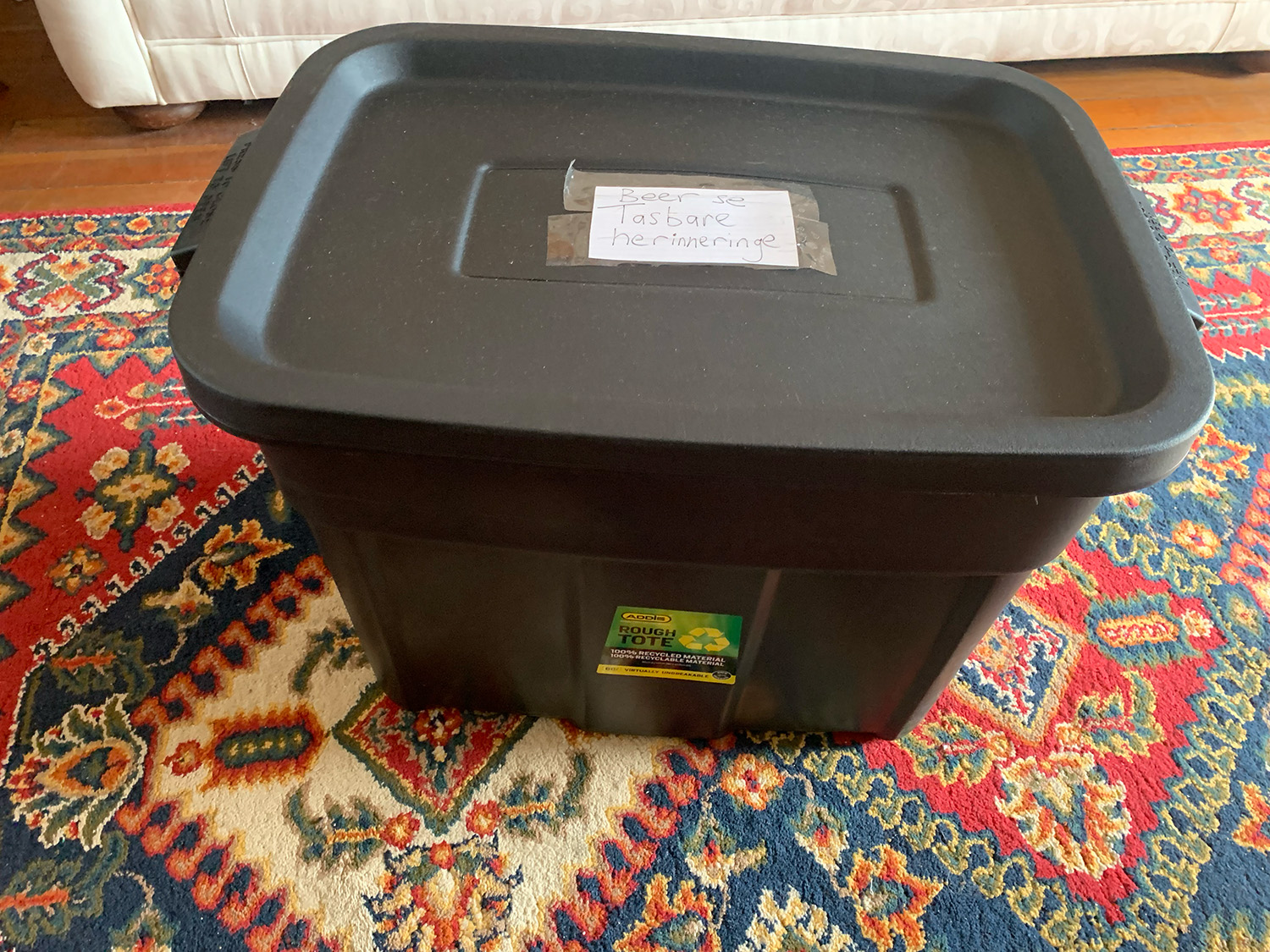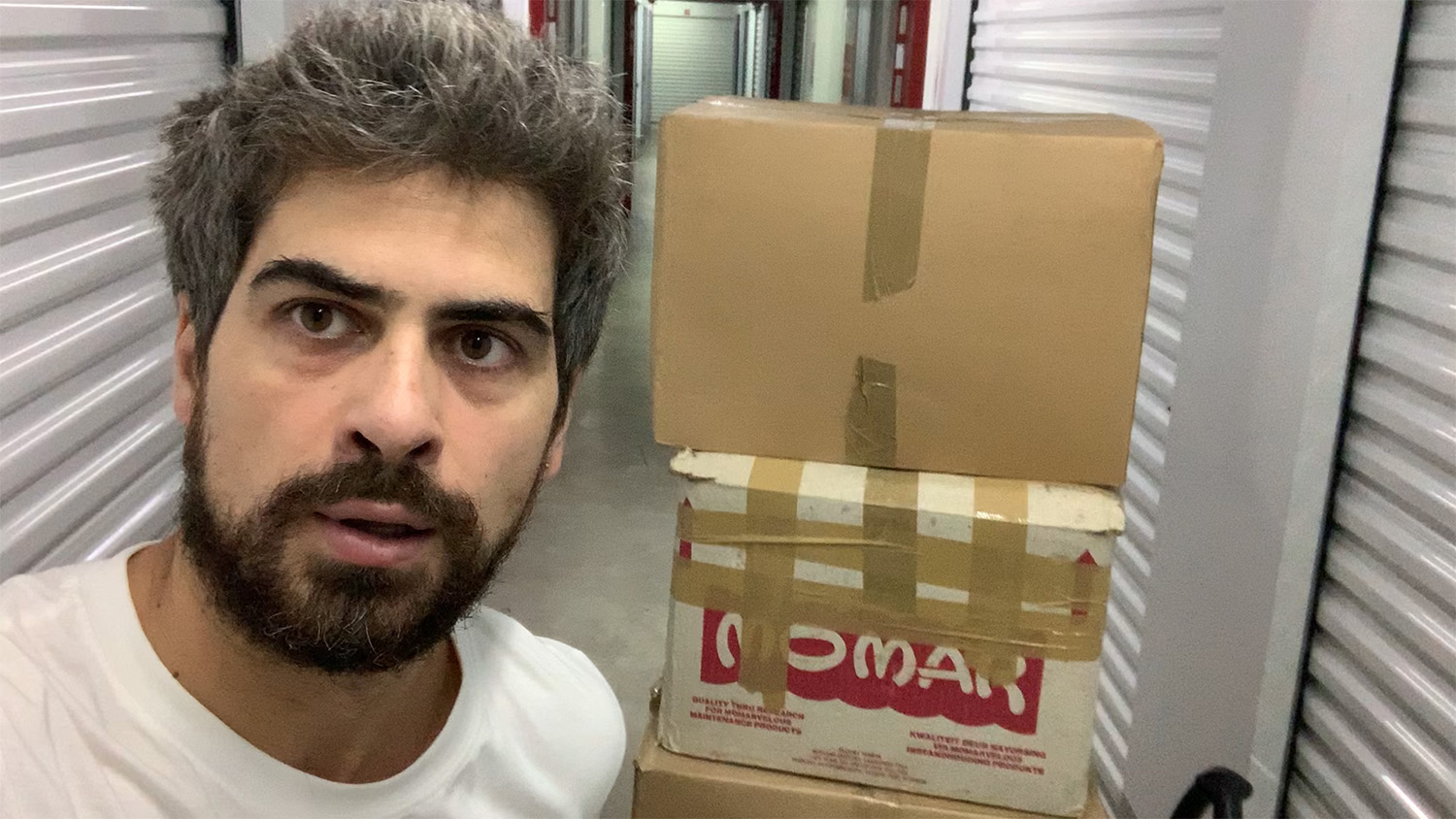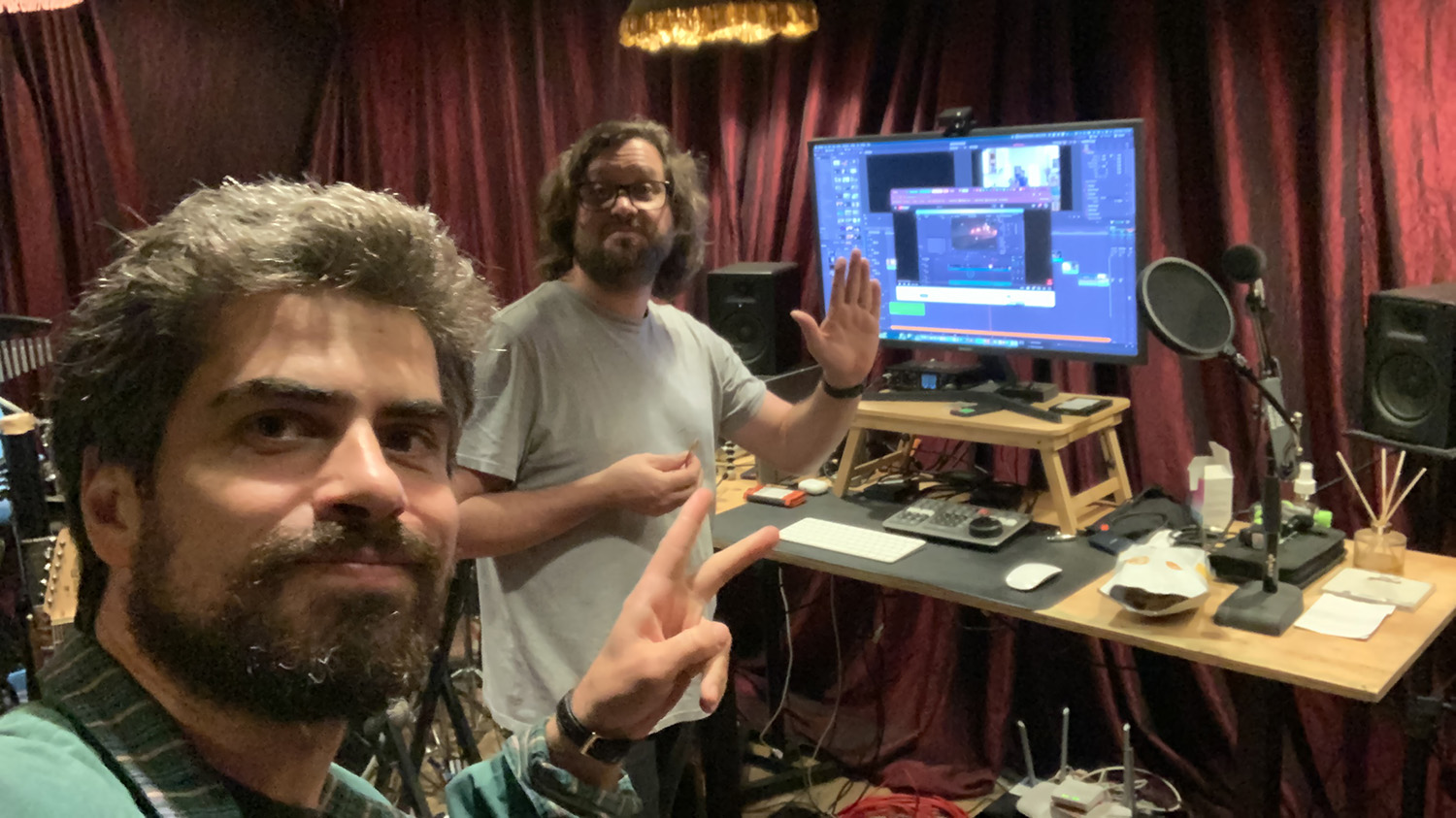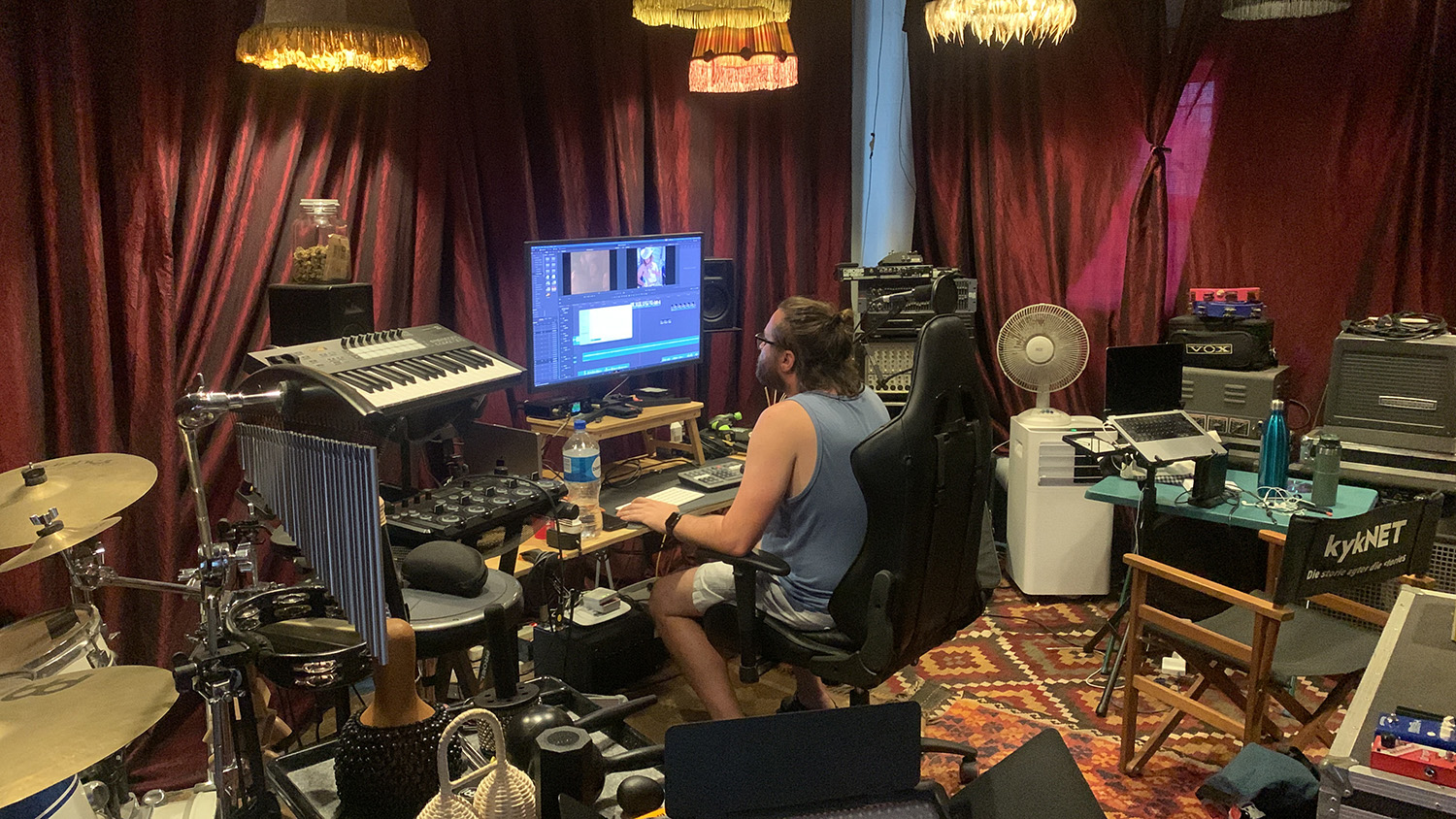



Documentary: Vergeet van my
A dusty black crate containing photos, journals and plastic bags full of DV8 video cassettes that recorded a music tour, was the starting point for a project that would later become the documentary film, Vergeet van my. When Beer Adriaanse, actor, screenwriter and former drummer of Zinkplaat, discovered the crate – a treasure trove of memories he thought were forever lost – he was not sure what to make of it. But Dirkie van der Merwe, who organised the music tours together with Beer and helped create those memories, convinced him that the story of their youthful journey of discovery, coming of age and rebellion, belongs on the silver screen.
Beer, screenwriter and director of the documentary, and Dirkie, the producer, talked about Vergeet van my, which was created by DPK Productions.
The documentary plays out like a storybook. How did you decide on the strategy of screening the archive material with Beer as the narrator’s voice?
Dirkie: The project changed quite a lot since our initial submission. We had many discussions on memory, how we remember things, and how we remember things differently, but we eventually decided to approach it as a type of archive or an artefact.
Beer: Yes, the approach was one of our biggest challenges. The first video material we discovered, covered the Third Avontoer. The ‘Avontoere’ were a series of music tours between 2006 and 2012. During the Third Avontoer we were filming a movie that never saw the light. So, our initial idea was to tell the true story behind this fictional movie that was shot during a non-fictional tour.
But it all became just too complicated. A big change came about when Stephanus Rabie, nowadays a director and producer who happened to be in and out on our tours way back, sent us a hard drive with visuals from the First and Second Avontoer. With that we had an archive filled with gold. But we still only had 30 minutes screentime for the documentary, and we soon realised that we had to shift the focus away from all the archive material, because it wouldn’t work. For me, it is more important to show viewers what happened, rather than presenting the full context. Show, don’t tell.
Our next challenge was that we only had time to present one person’s version of the story. I then had to inform Dirkie and Bertie Coetzee, Zinkplaat’s lead singer and fellow tour organiser: ‘Guys, this is going to be my version, sorry for you!’
Would a longer, more elaborated version of this doccie be the next logical step?
Beer: I think there is merit in telling the complete story. I think it may work as a limited or miniseries of at least four episodes. We definitely have enough visual material and there are ample story which we haven’t covered or elaborated on. Possibilities for narrative angles are endless, also the variations in which elements of the story played out – where it brought us today and where it could have led us. So, if we can get funding, then yes, absolutely, it would be wonderful. An entirely different experiment.
Beer, how did Dirkie manage to convince you to do the documentary? You were basically stuck with that black crate …
For me, the project actually signifies the completion of a cycle. In 2012, while I was studying in Germany, Dirkie sent me an email about the Silwerskerm Festival and encouraged me to enter. That led me to making Die buurtwag, my first short film.
Now, many years later, he again encouraged me to do something. I must have told him about 17 times that there is no story here, let’s just leave it. But when Faan (Stephanus Rabie) sent that hard drive that provided the rest of the treasure, the world somehow exploded, because we then suddenly had something interesting that I wanted to show people.
How does it feel to watch your younger self on screen?
Dirkie: It was quite interesting. Especially because my relationship with my wife, Marisa, just started then. At that stage, we have only known each other for two months, but she joined me on the tour bus. We were used to that environment, but for her to be thrown into the deep side of it, and to look back at it now and see what it looked like from the outside … total pandemonium. When we spoke about it recently, she said that she just came out of a bad patch then, and that she had needed that chaos and energy.
Beer: I have spent the last six months with my friends’ younger selves, as well as with my own younger self. It was a surprise to see how satisfying the experience was for my soul, and how it made me revisit my current life.
People who are familiar with the music of Fotonadans will recognise the title (also one of the group’s biggest hits) of the documentary. What made you choose this title?
Beer: The song was our official slogan during the first Avontoer. The second verse appropriately said, ‘follow the route of December’.
Dirkie: The title also links with the idea of being part of a group. Forget about me as an individual, because I am part of a bigger thing, this bigger dream. We are also part of that ‘forgotten’ generation when cell phones weren’t dominating everything. In the doccie you will notice the phone I was using then – it was an SMS phone! You had to push a button three times to find the letter c.
The musician Le-Roi Nel, former lead singer of Fotonadans, also created the original soundtrack for the documentary?
Beer: Yes, Le-Roi created the soundtracks of my three latest projects: Ekstra medium, Laastes and Parable. He is one of my best friends, but also, when he makes music, it feels as if my stomach is churning – in a good way. As if something in my deepest core is stimulated. And if you want to create from the deepest source inside yourself, it helps when you get somebody on board who understands you to the core.
What was the biggest fun making this doccie?
Dirkie: To talk to people you haven’t seen for many years; to revive those connections.
Beer: I found it wonderful to spend time with my friends’ younger selves. One of the most fulfilling aspects was to contact people I last spoke to many years ago.
What have you learnt from the experience; what are you grateful for?
Dirkie: We have made narrative short films before, but never a documentary. But even documentaries can be different from one another; with narrative doccies you can script and organise a lot. Our documentary mostly fell outside the normal guidelines, but the Silwerskerm Festival gave us a lot of leeway. The creative part of it was very cool.
Beer: If I must compare it with our experience in 2012 when we made Die buurtwag – I was fresh from the music industry, and we approached the project entirely like cowboys. The festival then also allowed us to make our version of a short film. I thought they would have tightened the screws and became much stricter in the meantime, but they were as open-minded as ever. I am very grateful for the patience they had with us.
I sometimes feel like the Silwerskerm Festival’s mascot, because I tell every person I meet who is trying to get a foothold in the industry, ‘If you want to start out, do it with them.’ Because nobody else will provide you with funding while you are learning. Nobody else will be as non-prescriptive about the genre of your project. They will offer you good mentorship with accomplished text mentors, proper directors and producers. I believe that the festival literally started the second Afrikaans film revolution.
